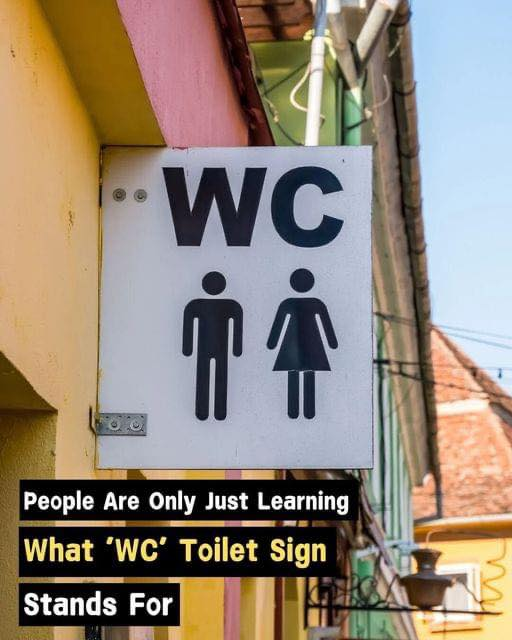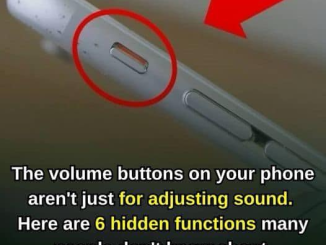
The Meaning Behind the ‘WC’ Sign: A Journey Through Bathroom Terminology
Have you ever noticed the letters WC outside a public restroom and wondered what they stand for? You’re not alone—people across the globe often puzzle over this cryptic abbreviation.
The Mystery of WC
Simply put, WC stands for water closet, a term historically used to describe a small room containing a toilet and sometimes a sink. While this might clarify the letters, it doesn’t exactly make the term feel more logical—similar to how “restroom,” “bathroom,” or “loo” can seem perplexing in their own right.
In 2020, a TikTok video featuring a couple named Shelby and Dylan hilariously highlighted the differences in bathroom terminology between Americans and Canadians. Walking past a sign reading washroom, Dylan quipped:
“What in the world is a washroom? And what are they washing in there? Oh, it’s a restroom. The only thing I wash in there is my hands.”
Shelby, off-camera, cheekily countered, “Do you rest in a restroom?”—to which Dylan admitted: “Good point. They both don’t make much sense.”
The video sparked a lively online debate about what to call the sacred space. Some commenters preferred “bathroom,” while others leaned toward “toilet,” “washroom,” or “restroom.”
One person humorously recounted a Disneyland visit where asking for the washroom led them to the laundromat. Another chimed in with, “Wait until he finds out about water closets.”
What Is a Water Closet?
According to Merriam-Webster, a water closet refers to “a compartment or room with a toilet” or “a toilet bowl and its accessories.”
Historically, the term reflects a time when specific rooms served distinct purposes. Bathrooms were for bathing, restrooms for resting or grooming, and the water closet for, well, using the toilet. As indoor plumbing became more common in the late 19th century, these spaces gradually merged into the modern bathroom we know today.
The water closet, however, often remained a separate, enclosed room in some homes and public spaces, particularly in Europe and international facilities. You’ll frequently spot the abbreviation WC in airports, hotels, or restaurants, catering to a globally diverse audience.
WC Across Cultures
Online forums like Reddit often dive into the quirks of global bathroom terminology. One post posed the question, Why is a public WC called a bathroom if there’s no bath?
A user responded:
“Americans might ask, ‘Why is it called a WC if it isn’t even a closet?’”
Others shared cultural takes:
- In Russian, it’s referred to as a room without windows, even if there’s a window.
- In Esperanto, it’s necesejo, meaning “necessary place.”
- Canadians frequently use washroom, which is also popular in parts of the U.S. Midwest.
Restroom vs. Bathroom vs. Washroom
The terminology debate continues, with many feeling washroom is the most logical since washing happens there. Meanwhile, terms like restroom or bathroom remain euphemisms.
One Redditor summed it up best:
“Best one, I think. You should be washing in there—not resting.”
What Do You Call It?
Whether you say WC, restroom, bathroom, toilet, or washroom, everyone has a favorite term. What’s yours? Share your thoughts, and don’t forget to spread this story to find out what others think!
A controversial statement made by an online influencer is that she is “too pretty” to work for the rest of her life.

With a recent TikTok post, well-known influencer Lucy Welcher, who has a sizable online following, started a social media firestorm. The dispute? Welcher said she is “too pretty” to work in a conventional setting.

The Influencer’s Backlash and the Go-Viral Video
Welcher, who is well-known for her opulent lifestyle videos, expressed her dislike of working a regular nine to five job in the now-deleted video. She bemoaned the thought of having to get up early every day and asked herself if her attractive appearance was a match for the grind. Many viewers found offense at this careless comment.

The influencer received a lot of backlash for her post. Welcher came under fire from commenters for being conceited and superficial. They emphasized the value of having a strong work ethic and the erroneous belief that someone’s beauty should absolve them of social responsibility. A user satirically pointed out Welcher’s conceited sense of importance, while another drew attention to the discrepancy between work ethic and attractiveness.
Welcher tried to douse the fires when he saw the outcry. She said she was being unfairly targeted, so she removed the old video and uploaded a new one. She answered online accusations about her lifestyle with a sarcastic response. She refuted rumors that she lived in a home, had expensive automobiles, or earned enormous sums of money.
A Second Opinion: Comedy or Ongoing Debate?
A few days later, Welcher uploaded a “remake” of the original video, as if reveling in the publicity. This time, some viewers took her words as a joke, which resulted in a more positive response. Supporters flocked to the influencer’s defense; some even jokingly agreed with the idea that one’s beauty serves as an excuse to avoid work.
Reimagining of the most despised video I’ve ever created: #SephoraGiveOrKeep #workable #funny
The difficulties with humor on social media are made clear by this episode. Welcher’s initial video didn’t go well because it lacked context. The incident serves as a reminder of how easily messages can be misconstrued while communicating online, emphasizing the importance of being explicit in all communications, even when comedy is included.
Part of this information was produced using a language model from artificial intelligence. Please be aware that although we work hard to ensure quality and authenticity, the information supplied might not be perfect or current. For specialized guidance or information, we advise contacting experts and conducting your own independent verification of the content. We disclaim all liability and responsibility for how this content is used or interpreted.



Leave a Reply